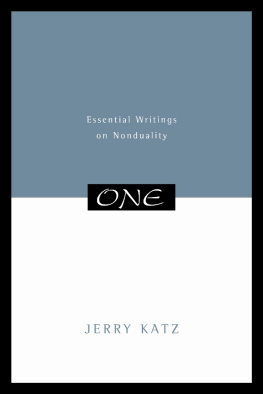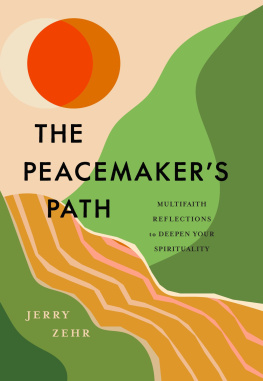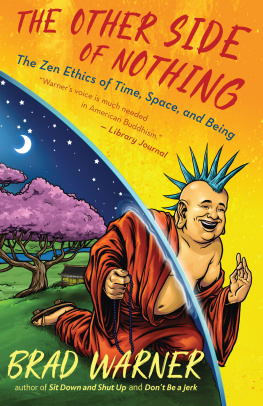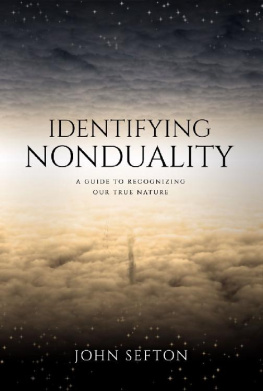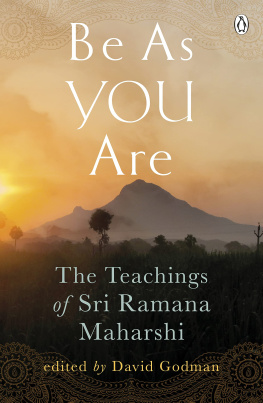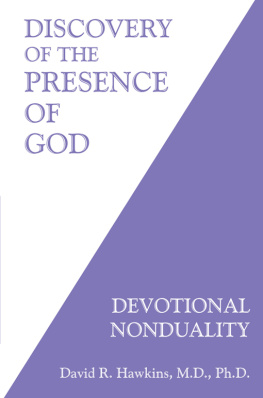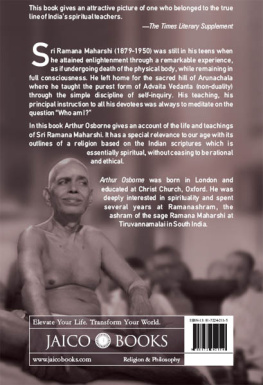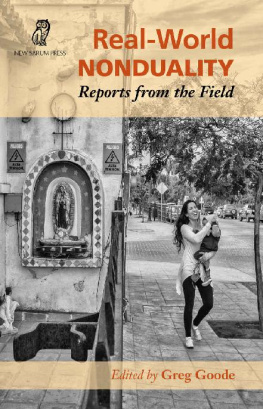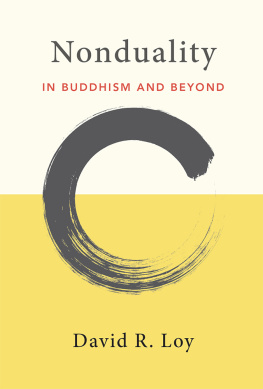Part One
What Is Nonduality?
Nonduality is the experience of our true nature, the taste of being. But when we try to describe what this true nature is, the written word often falls short. No one would mistake their knowledge of what a tree is for an actual tree, but in the realm of consciousness and spirituality, people sometimes feel that if they know what their true nature is, theyve got it. However, being, by its very nature, cant be known, so words can only give us the direction in which to look.
The desire for spiritual growth is like every other desire. It may lead to mystical experience, to inner peace and greater wisdom. Perhaps we become comfortable in ashrams, around gurus, and at gatherings and retreats. Meditation, yoga, and spirituality fill our lives. For a while our desire feels satisfied. But after months or years, the desire returns. Now we learn that our desire for mystical experience, spiritual wisdom, or inner peace was the wish for another thing to possess.
We remain unsatisfied. Our spiritual need is now directed toward something unlike any spiritual experience or knowledge we have ever imagined. This something lies beyond experience and growth, beyond knowledge, beyond possession. We intuit that the fulfillment of this desire is the end to stress, anxiety, desperation, and fear, and the opening to freedom, joy, and simplicity.
This something could be called truth. When the thirst for truth is met, the sense of being separate from truth is gone. Nonduality literally means not two , which describes our relationship to truth. We, and our desires, do not disappear in truth; they simply become seen as not separate.
The nature of truth is not two . If truth were separate from us, it would be a truth of duality. Far from providing relief from stress and fear, a life of duality would be a life of unfulfilled desires. We know that kind of truth. It is our common world in which one thing after another promises to satisfy us, including spiritual things.
In childhood culture we were handed a clue about how to manage our urge for that something:
Tin Woodsman: What have you learned, Dorothy?
Dorothy: Well, II think that itit wasnt enough to just want to see Uncle Henry and Auntie Emand its thatif I ever go looking for my hearts desire again, I wont look any further than my own backyard. Because if it isnt there, I never really lost it to begin with! Is that right?
Glinda: Thats all it is.1
Our hearts desire and who, what, and where we are, are not separate.
Our pursuit for truth is for the full recognition of non-separation, not-two-ness, or nonduality. The value of this quality of desire is confirmed in the first verse of the scripture from Hindu tradition known as the Avadhuta Gita, or Song of the Free :
Through the grace of God alone, the desire for nonduality arises in wise people to save them from great fear.2
The need for knowing nonduality, or non-separation from truth, is grace, a profound gift arising from truth. The desire, the Avadhuta Gita says, arises in wise people. We could say the hunger for nonduality is wisdom. Wisdom is allowing the desire for nonduality to unfold. That is the way to be saved from fear.
Weve talked about two kinds of desire: common desire, including the desire for spiritual experience and growth, and the desire for nonduality. We may also speak of two kinds of fear. The everyday kind is fear of loss: loss of friends, lovers, money, jobs, power, possessions, health, our personal status quo, and life. As with common desires, the easing of one fear makes room for the arising of another. Everyday fear and its associated mental conditions of despair, anxiety, and grief, continue.
The second kind of fear is what the Avadhuta Gita calls great fear, and there are two kinds of great fear. One is the fear that we do not exist, that we are not. Charlotte Joko Beck wrote: Intelligent practice always deals with just one thing: the fear at the base of human existence, the fear that I am not. And of course I am not, but the last thing I want to know is that.3
What saves us from great fearand all fearis the desire for nonduality. That is, what saves us from the fear of nonduality is the desire for nonduality, a simple statement that could be applied to any fear.
We have already noted that we may feel the opposite, that common life is not real, that we remain unsatisfied with all our spiritual endeavors, and that the sense of I am not is what is real. The second great fear is that we are missing what is real, what is true. The desire for nonduality saves us from that fear.
According to the Avadhuta Gita , by Gods grace the desire for nondualityfor the full recognition that we are notarises within us. If our wish is for experiences, knowledge, awareness of subtle things, or anything other than the recognition that we are notthen our desire is no different than the desires for ice cream, a diploma, a spouse, a vacation: all good things, but they may lead to further wants.
The desire for truth or nonduality, if it is not avoided, sets us forth in a new direction.
Desire and the Path
Eugen Herrigel, in his book Zen in the Art of Archery , describes the passion for nonduality:
Why I took up Zen, and for this purpose set out to learn the art of archery, needs some explanation. Even as a student I had, as though driven by a secret urge, been preoccupied with mysticism, despite the mood of the times, which had little use for such interestsNowhere did I find anything approaching satisfactory answers to my questionsI found myself confronted by locked doors, and yet I could not refrain from constantly rattling at the handles. But the longing persisted, and, when it grew weary, the longing for this longing.4
Elsewhere in the book Herrigel states:
If he is irresistibly driven towards this goal, he must set out on his way again, take the road to the artless art. He must dare to leap into the Origin, so as to live by the Truth and in the Truth, like one who has become one with it.5
We, too, move forth driven by a secret urge. Desire fuels the unfolding of our lives, but truth, or nondual reality, is not separate from us. There is no going from non-truth to truth, from Oz to our own backyard. When our desire for nonduality is resolved, there is the recognition of truth or the nondual nature of reality. That recognition is not extraordinary, even if the life prior to that recognition was fantastic. Using eternity consciousness for truth, John Wren-Lewis wrote:
Perhaps the most extraordinary feature of eternity consciousness is that it doesnt feel extraordinary at all. It feels quintessentially natural that personal consciousness should be aware of its own Ground, while my first fifty-nine years of so-called normal consciousness, in ignorance of that Ground, now seem like a kind of waking dream. It was as if Id been entranced from birth into a collective nightmare of separate individuals struggling in an alien universe for survival, satisfaction and significance.6
The pursuit of nonduality, when resolved, is recognition of something fundamentally not separate from our own backyard.
But the sense may remain that we are on a journey, and we want to know where to focus our attention to serve our desire. We shall begin by considering the teachings and instruction of Bhagavan Sri Ramana Maharshi, perhaps the most famous nondualist of the twentieth century. Ramana Maharshis instruction includes two injunctions: to attend to the I -thought so that we may know its source, and to surrender to Self, God, truth, or nondual reality. Although these practices are mentioned throughout the book, at times offhandedly, I would like to impress that to follow the instructions for inquiry and surrender is for most people a difficult, seemingly impossible task. Even though we may be urged on by the fear that we are missing what is true, we may at some point become frozen by the fear that we are not, that we do not exist. Even if we think we want to know the state of I am not, great fear strikes when we realize we cannot know such a state, and there cannot be such a state.

